“Not here” is the name with which members of the Mayo or Yoreme ethnic group, who live in the north of Sinaloa, have called for the opposition movement against the project to produce ammonia at the foot of Ohuira Bay, in the municipality of Ahome.
The project of the company Gas y Petroquimica de Occidente S.A. de C.V., which began to take shape in 2008, consists of the installation of a plant producing 2,200 tons per day of anhydrous ammonia, a basic input for the production of fertilizers, in a first stage.
In the second phase, it is intended to install another plant to double the production of ammonia and, in a third, one more for the production of methanol, according to information from the company itself.
This project, authorized by the Ministry of Environment and Natural Resources (Semarnat) in 2014, directly impacts the lifestyles and ecosystem of the communities surrounding the coastal lagoon, said Claudia Quintero Sandoval, an indigenous leader from the town of Ohuira.
The opposition said that more than 4,500 fishermen are directly affected. A dozen cooperatives work there, integrated into two fishing federations: Siglo 21 and North of Sinaloa-South of Sonora.
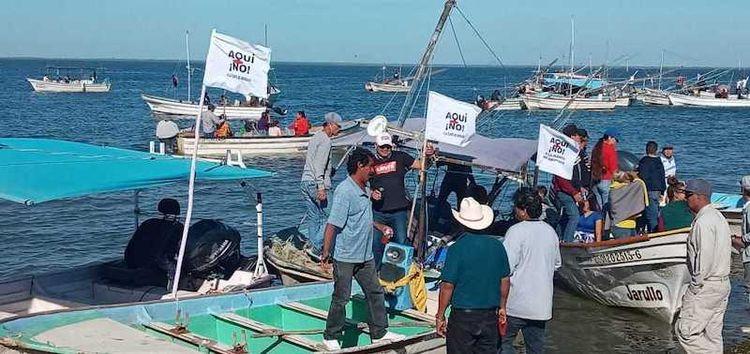
Photo: Aquí No Collective
Species such as chocolate clams, Chinese clams, mule feet, snappers, shrimp, and others are used. The livelihood of the majority of the inhabitants who live in the area depends on this activity.
In addition, the bay is considered a sacred site for indigenous communities, with more than 10 ceremonial centers.
“The Sinaloa government is providing facilities for this project,” the company said in its Environmental Impact Statement (MIA) held in 2013. The installation of these plants involves an overall investment of 5 billion dollars, with an initial amount for the first phase of 1 250 million dollars.
It seeks to take advantage of the proximity to the port of Topolobampo for the commercialization of ammonia. The MIA even states that it had approaches with the parastatal company Pemex, whose plant is located on the side, to explore the possibility of sharing its pipeline corridor.
Gas y Petroquimica de Occidente was established in November 2013, as stated in the constitutive act of the Public Registry of Property and Commerce (RPC), with shares of the companies Petro Pinsa S.A de C.V, the Sinaloan businessman José Eduvigildo Carranza Beltrán, and Mexkc S.A de C.V, of the German David Joseph Cassidy.
Since the authorization of the project, the company has made no progress in construction due to a wave of amparos and complaints. What is at the door is an indigenous consultation ordered by the Supreme Court of Justice of the Nation (SCJN), after protecting the Mayo or Yoreme community of Lázaro Cárdenas, located 7.5 kilometers from the plant's land, in April 2022.
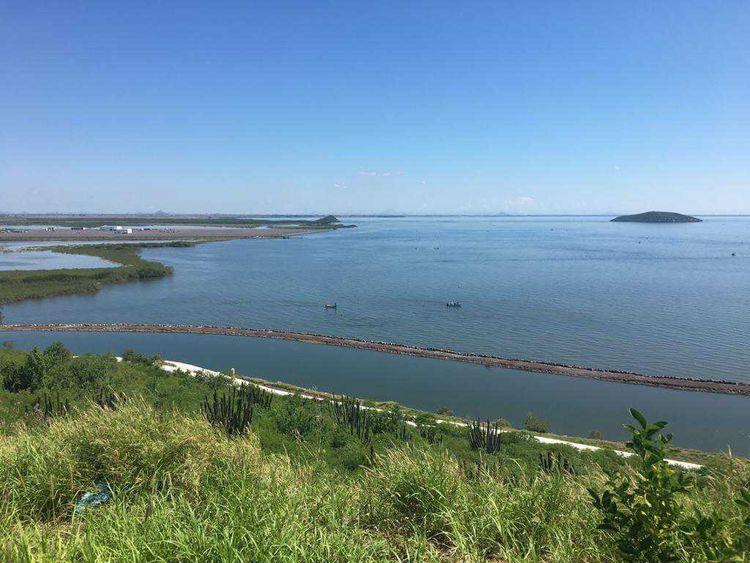
Photo: Aquí No Collective
Semarnat authorization and the legal battle
For the communities, the crux lies in the authorization by Semarnat without having carried out a free and informed indigenous consultation, despite the fact that these are highly risky activities.
On February 21, 2014, the Northeast and Upper Gulf of California Regional Directorate of the National Commission for Protected Natural Areas (Conanp) issued its technical opinion regarding the project, at the request of Semarnat.
The opinion of the Regional Directorate considered that the project is located within the Ramsar site polygon “Lagunas de Santa María, Topolobampo, Ohuira” and in the area of influence of the Gulf of California Islands Flora and Fauna Protection Area.
“It is recommended that the project not be authorized because its development would contravene numbers 4.5 and 4.16 of the Official Mexican Standard 022-Semarnat-2003 (on wetlands) and the General Wildlife Law.”
However, on April 14 of the same year, the Conanp headquarters issued a new document alleging that the project is technically feasible with the carrying out of some monitoring studies, according to the document signed by the then national commissioner Luis Fueyo Mac Donald.
With the approval of the national office of Conanp, Semarnat authorized the project just a week later, on April 21, 2014, without taking into account the considerations of the regional office.
The communities of Ohuira and Lázaro Cárdenas appealed to the Judiciary for amparo, where they stated that the acts of authority of the Semarnat violated their rights as indigenous peoples.
Both cases, after going through several processes in federal courts and tribunals, were attracted in 2021 by the SCJN.
In the case of Lázaro Cárdenas, indigenous people claimed that the Semarnat resolution could have significant impacts on their ways of life and their environment.
In response, the federal agency alleged that the complainants did not prove that they were indigenous, since “it was not enough to call themselves indigenous”, and that it was not demonstrated that they could be affected by the authorization.
In this regard, the Second Chamber considered Semarnat's arguments unfounded and stated that self-affiliation constitutes the fundamental and sufficient criterion to determine who should be considered members of indigenous peoples or communities, as stated in the judgment in the file number 498/2021.
He also said that the Semarnat resolution, while recognizing that these are highly risky activities, minimizes potential impacts on indigenous communities.
Therefore, the SCJN protected the community of Lázaro Cárdenas so that they are not excluded or deprived of their right to express opinions through prior, free and informed consultation, regarding the Semarnat decision that affects their territory and the ecosystems found there.
In the case of the community of Ohuira, with file 497/2021, a decision is pending by the Court. Claudia Quinero, who is part of the complainants, hopes that this resolution will go in the same direction as that of the neighboring community, since they demand the same violations of their rights.
In compliance with the ruling of file 498/2021, the Ministry of the Interior reported in the Official Gazette of the Federation (DOF) that Semarnat and the National Institute of Indigenous Peoples (INPI) will carry out the Indigenous Consultation, in accordance with the Mayo regulatory system, in communities located 45 kilometers around, on July 9 and 10, 2022.
On November 28, 2021, a Public Consultation (different from the Indigenous Consultation model) was held, also organized by the Segob and the INPI, where the yes vote won. However, the opponents of the project stopped participating, considering that it was a “rigged” plebiscite, said Rosendo Castro, of the collective Aquí No.
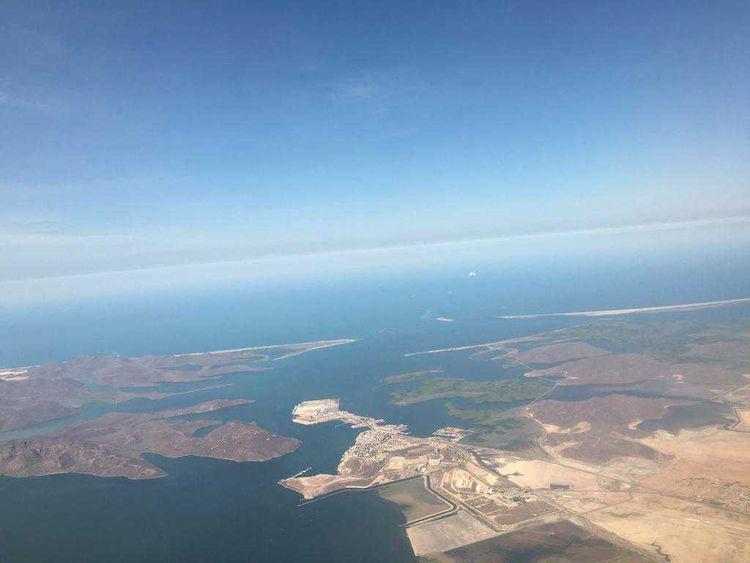
Photo: Aquí No collective
Ecosystems, in the midst of the dispute
The main concern of indigenous communities and allies is natural resources, on which they depend economically.
According to the web portal of the Ramsar Convention, the Santa María, Topolobampo and Ohuira Lagoons are home to 84% of the migratory waterbirds distributed in Mexico during the winter.
He also reports that the system works as a shoreline stabilizer by reducing runoff energy caused by rains and fishing is the most important use in the area.
Diana Escobedo Urías, researcher at the Interdisciplinary Research Center for Regional Integral Development of the National Polytechnic Institute in Sinaloa, stated that it is an unfeasible project for a lagoon system with the characteristics of Ohuira.
Ohuira, with an area of 12,500 hectares, is a shallow lagoon up to five meters deep, with a slow flow of water, so that any contaminant can remain in this body of water for a long time, the biologist explained.
Around the lagoon there are mangroves, species protected by the Official Mexican Standard 059-Semarnat-2010, which function as incubators for shrimp larvae, clams, scales, and others.
For the academic, one of the main risks for the shrimp population is a desalination plant that is intended to be installed in the complex, since it will pour hot water and brine into the lagoon, thus modifying its natural conditions.
“The lagoon already has impacts and they continue to increase rather than protect, for the benefit of local people,” he said in an interview with Journalism CN.
Escobedo Urias also indicated that these are activities that contradict the Gulf of California Management Program, which provides for only small-scale fishing activities for the area.
“They promise 140 jobs in a highly automated plant, against the welfare of nearly 5,000 local fishermen,” he said.
The company also occupies land belonging to the Federal Maritime Terrestrial Zone (Zofemat), for which it claims to have the appropriate concession. In this area, the expert added, marshes were filled with stone material.
Organizations such as the Council of Ecology, Presur A.C., and the Federation of Fisheries Cooperatives “21st Century Fishermen”, issued a technical document with considerations about the project.
The document points out that the Santa María, Topolobampo and Ohuira lagoons are one of the most productive coastal environments in the Gulf of California, based on studies carried out in 1978 and 2003, since they are an area for breeding, feeding and shelter for economically relevant species, which support not only traditional fisheries, but also those of the high seas.
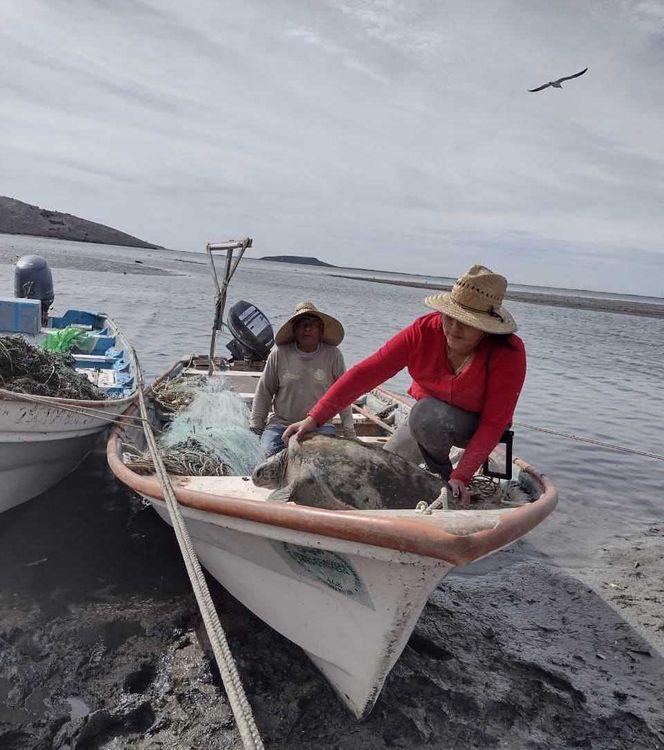
Photo: Aquí No collective
In a modeling of possible risks, the organizations also state that the dispersion of ammonia for five minutes, due to the rupture of a pipeline, could have immediate lethal effects 15.5 kilometers around, but the toxicity zone would reach up to 400,000 people, as it extends to the city of Los Mochis.
On the other hand, Western Gas and Petrochemistry maintains that this is a viable project. On its web portal, it assures that the plant will be installed on land already impacted, where there was no presence of vegetation.
It also alleges that, based on the studies carried out in the immediate vicinity of the plant, there are no necessary conditions for the shelter of fish and crustacean larvae, which is why they will not be affected.
In exchange, the company offers a series of water and air monitoring, conservation, reforestation and species rescue programs.
The members of the Aquí No collective say they are not opposed to development, but they ask the company and the government to look for other options to install and operate the project.
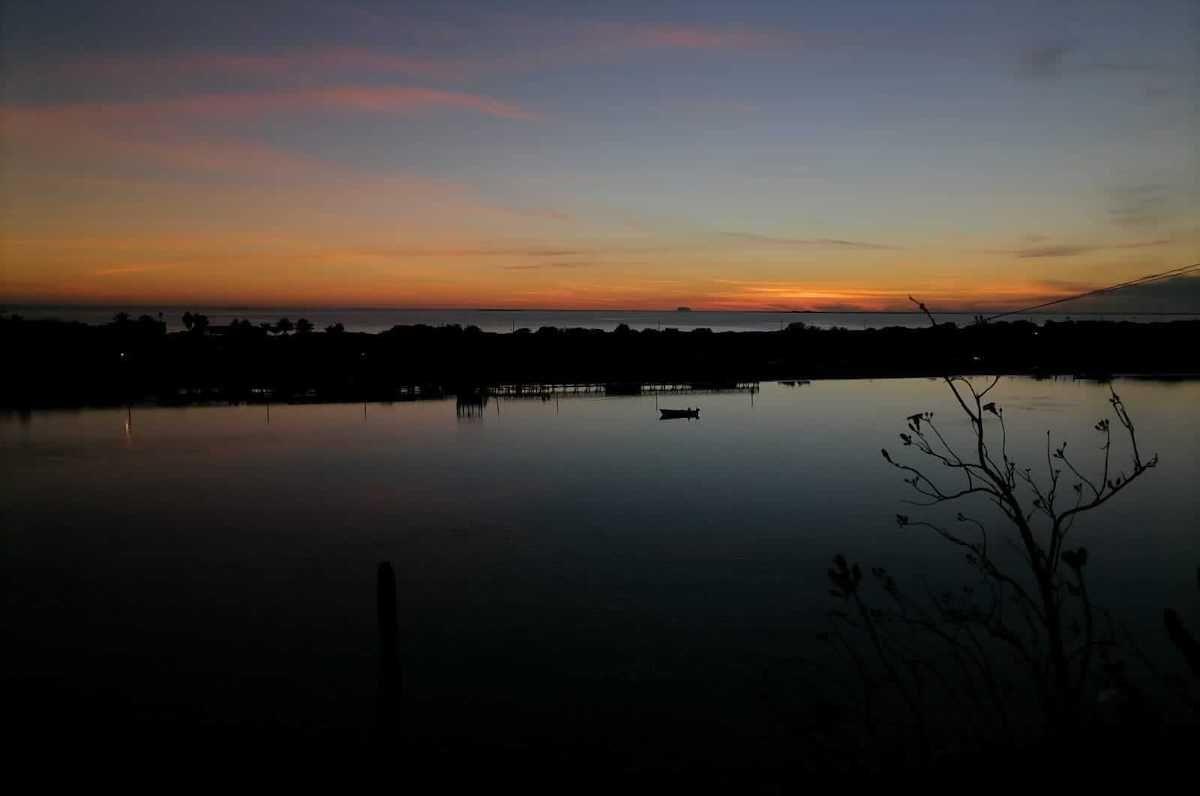


Comentarios (0)